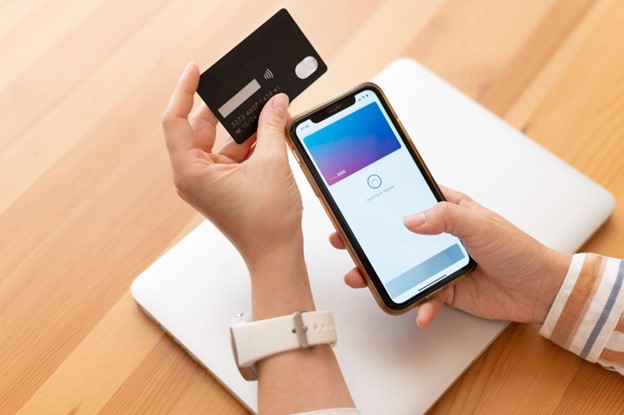The Advantages of Paying in Installments

Running a successful business in the Middle East largely depends on how smooth, seamless, safe, and efficient you can make your customer’s experience. And offering payment flexibility can go a long way in ensuring the same. By allowing shoppers to make installment payments, you can improve their satisfaction while securing your own revenue. In fact, the buy now pay later (BNPL) model is gaining increasing popularity in the region due to a surge in ecommerce and the widespread usage of mobile devices for payments and banking. In KSA and UAE, internet penetration is close to 100%.
Moreover, according to a Deloitte report, since BNPL complies with Sharia law, Middle Eastern consumers are more comfortable about adopting it vis-à-vis credit cards. By 2028, the total addressable market for BNPL is likely to reach USD 3 billion in KSA. So, the time is right for you to grow your venture through payment flexibility. The following write-up explores the advantages of paying in installments for consumers as well as business owners like you.
Why Customers want to Pay in Installments
Listed here are the key benefits of installment payments for consumers:
- Easy Budgeting – Being able to pay in installments allows customers to manage their monthly budget better. They can spend on what they want without having to compromise on rent, essentials, or utility bills. This is particularly helpful for young shoppers, homemakers, or those who have retired.
- Saving for Emergencies – Installment payments allow consumers to protect their cash reserves and avoid exhausting everything in one go. This means, they can always set aside some money for rainy days or unforeseen events.
- Buying Premium Items – Paying in installments gives customers the power to own limited edition or expensive items that they would have foregone if they had to pay in full at once. By spreading out the total amount over several months, it becomes easy to afford designer clothes, jewelry, accessories, sophisticated gadgets, and more.
- Flexibility – With an installment or BNPL model, paying in incremental amounts is another benefit. Hence, if their situation permits (for example, if they receive a bonus at work or earn good returns on an investment), customers can pay off more with each installment and become debt-free fast.
Benefits of Installment Payment Plans for Merchants
By offering consumers installment payment flexibility, you can benefit in the following ways:
- Better Shopping Experience – When you provide customers an installments payment system on your e-store, they end up purchasing what they want without worrying about the total bill value. There are fewer instances of cart abandonment and shoppers appreciate the flexibility you offer them, which improves their trust and confidence in your brand.
- Improved Conversion Rate – The option to pay in installments encourages more site visitors to transition from the consideration to the purchase stage. And higher the conversion rate, the more sales you make.
- Higher Average Order Value – Customers manage to buy pricey items and spend more than usual with installment payments. Even strictly budget shoppers can buy what they desire affordably. This boosts the average order value, and consequently, your total revenue.
- Widened Consumer Base – Providing the option of installment payments also helps in expanding the base of customers by attracting those who probably hesitated to shop from your store before, owing to the pricing. You get to tap demographics like millennials and Gen Z shoppers.
- Upfront Payment – Offering the installment purchasing feature doesn’t impact your cash flow negatively, since you receive upfront payment from the customer’s bank. This means, you don’t have to compromise on your financial stability as a business while enhancing the customer experience.
- Enhanced Customer Loyalty – Since the installment financing feature eases the customer’s journey on your ecommerce store, they tend to refer your brand to others and keep coming back themselves for more shopping in the future. In the long run, this pattern improves retention and loyalty.
Make the Most of Installment Payment Plans
By now, you can see why embracing installment payment is the way to go for modern businesses. Besides offering more flexibility to consumers, such payment plans empower them to own the products they want and live a better life than what their immediate financial circumstances permit. As a merchant, you get to benefit from improved brand image, higher conversions, more sales and revenue, and an enhanced bottom line. If you are wondering how to get started, picking an online payment gateway like PayTabs can make your life easy. Integrating it with your website and app can take your customer’s checkout experience to a whole new level, while ensuring you receive payments on time, securely, and without any hassle.
FAQs
1. What are the advantages of paying in installments?
As a customer, making installment payments helps you to enjoy flexibility, buy what you want without worrying about money, own even premium products right away, manage your budget easily, and keep aside emergency cash. As a merchant, when you allow customers to pay in installments, it improves their shopping experience, gains their trust, drives more conversions, and boosts loyalty in the long run.
2. Are installment payments available for all purchases?
Installment financing might be available on all or some purchases, depending on the type and size of business, their policies, and nature and price of the product. Usually, most merchants offer the installment payment option for electronics, furniture, high-end jewelry, clothes, fashion accessories, vehicles, etc.
3. Can I pay off my installment plan early?
Yes, usually you can pay off your installment plan early by clearing any remaining balance. However, check if there are any penalties or fees associated with such payments. It is generally a good idea to use any extra money you have to pay off a purchase completely and become debt-free soon.








